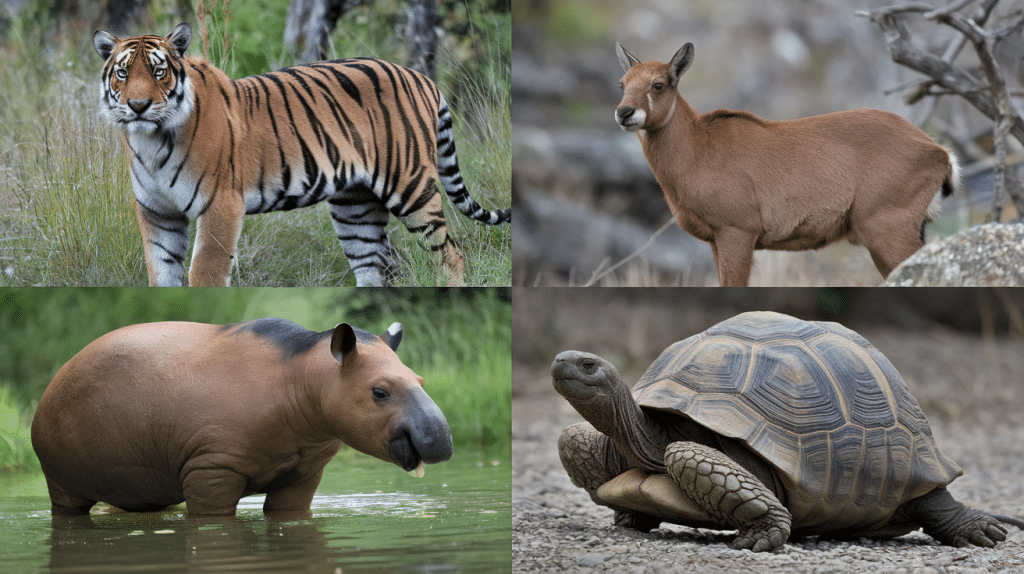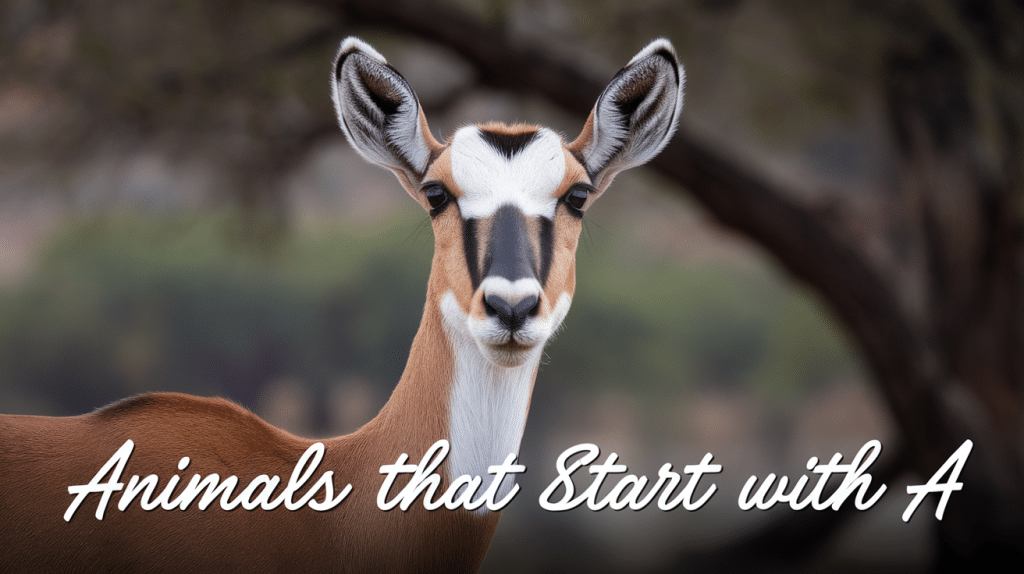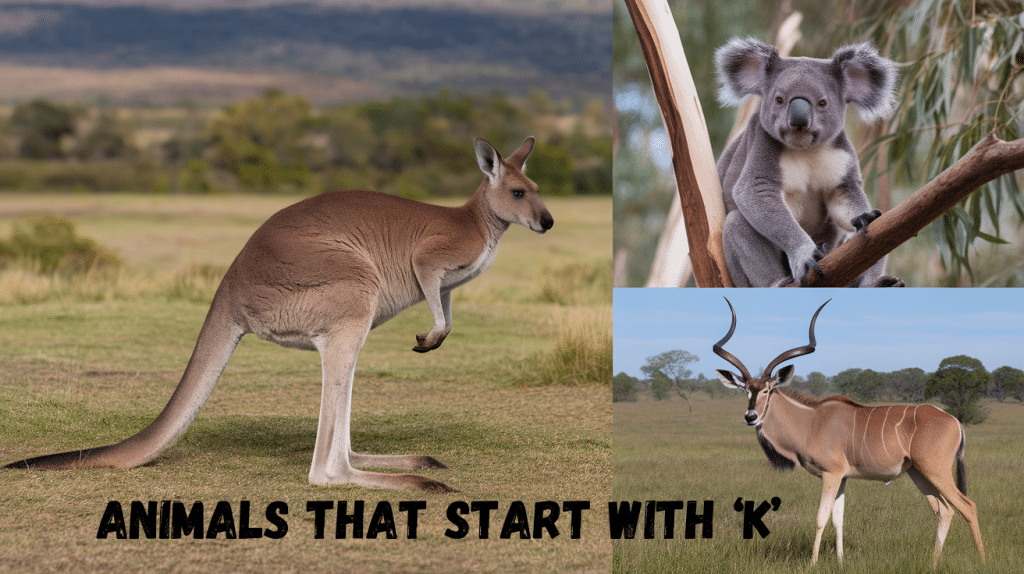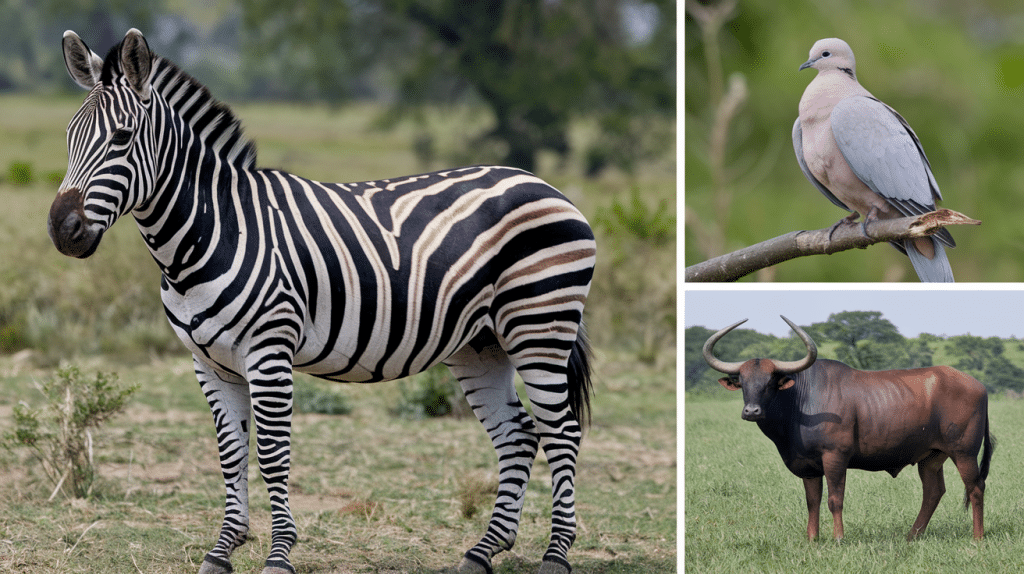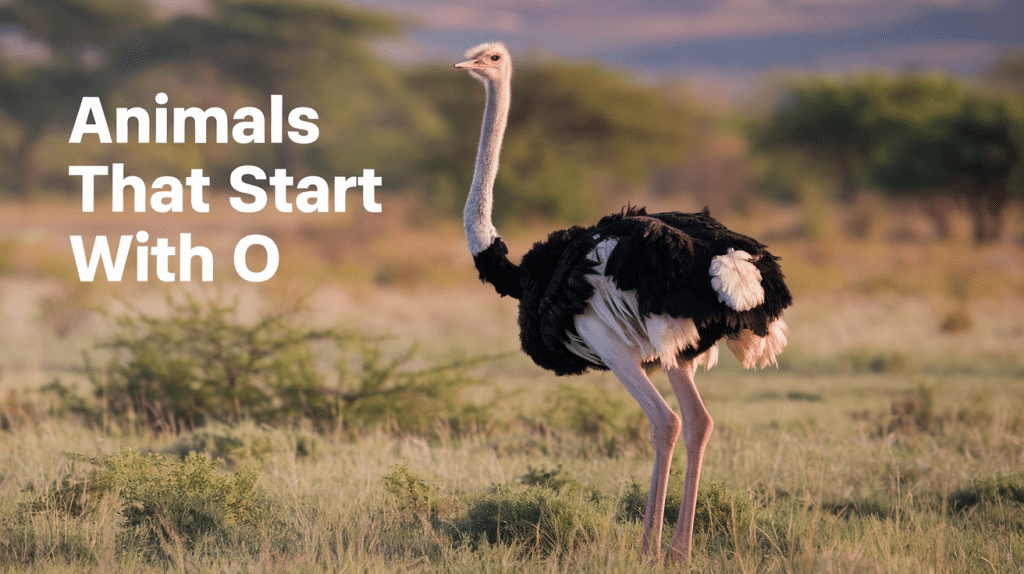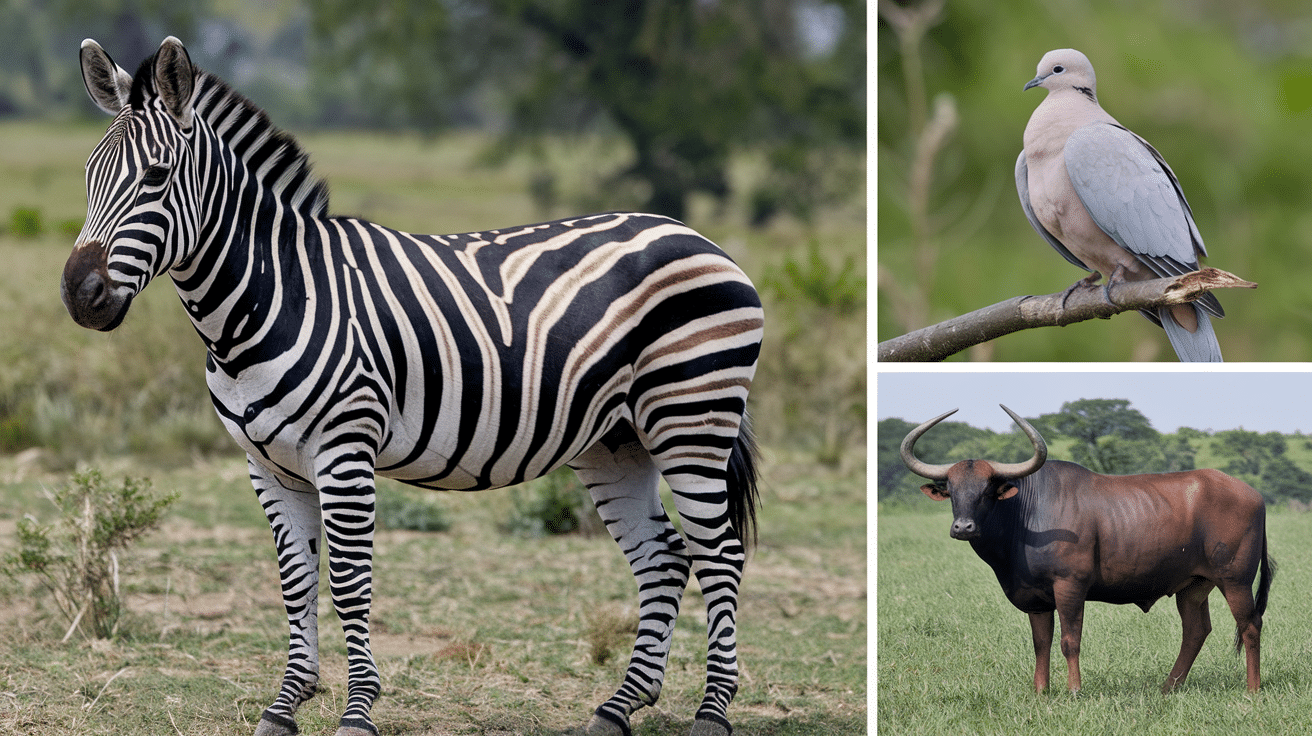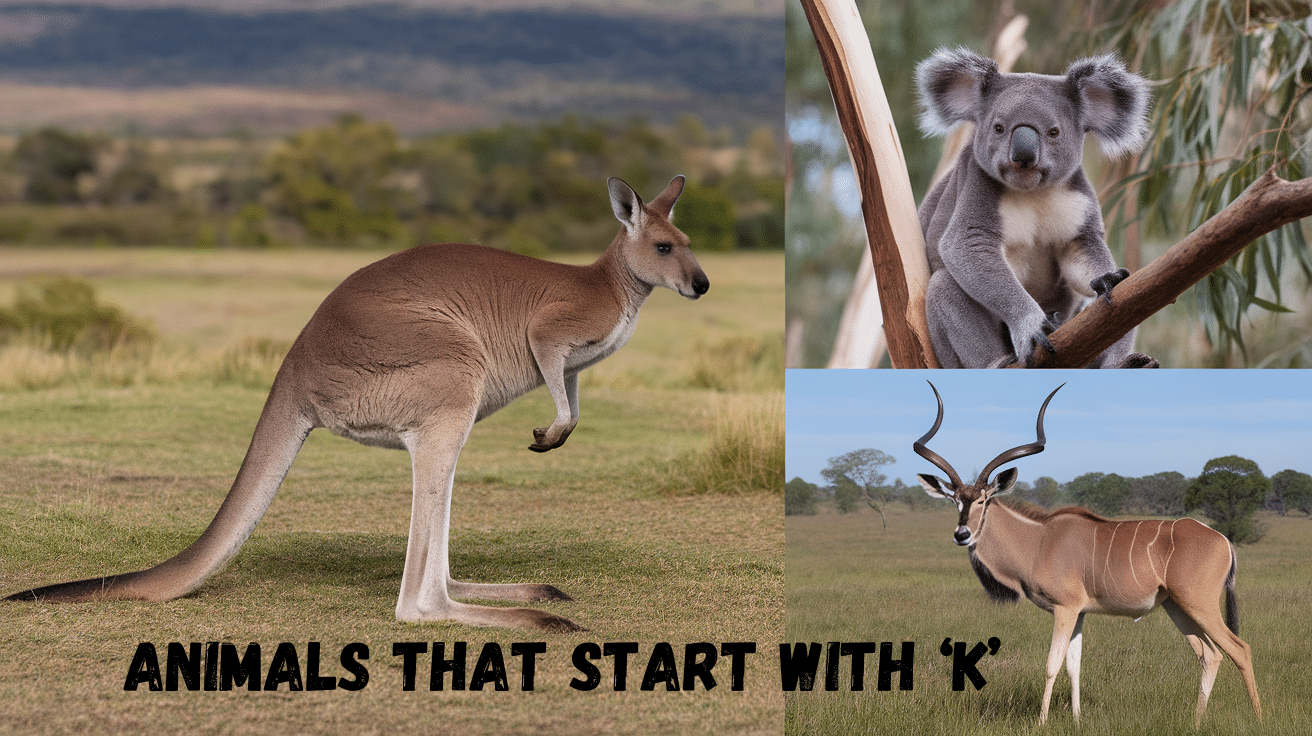Now Reading: 103 Animals that Start with Q: Complete List and Fun Facts
-
01
103 Animals that Start with Q: Complete List and Fun Facts
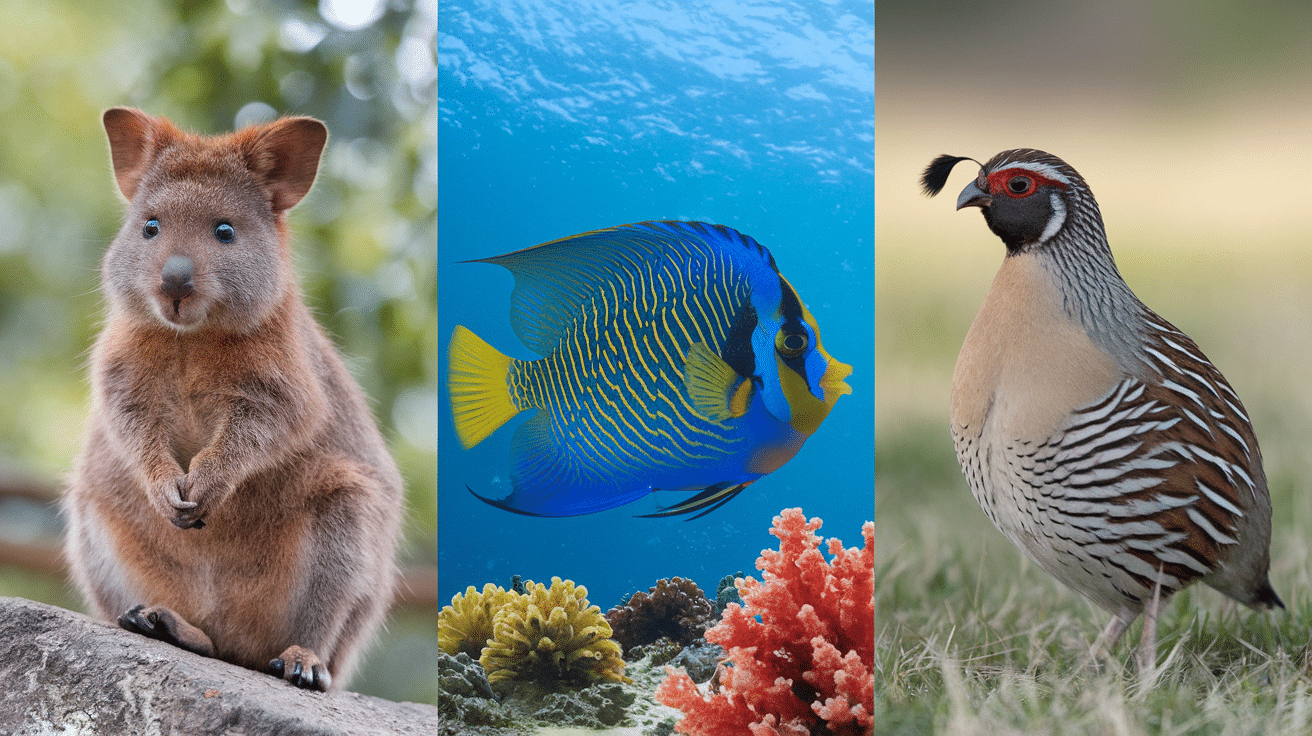
103 Animals that Start with Q: Complete List and Fun Facts
Ever wonder which animals start with the letter Q? It’s not a long list, but these creatures are pretty cool!
Q might be one of the least common starting letters in the animal kingdom, but the critters that begin with this quirky letter have some surprising stories to tell.
From the quick quokka with its famous “smile” to the quiet quail hiding in grasslands, these animals have unique traits worth knowing about.
Some of these Q-named animals live right in our neighborhoods, while others call exotic places home. Each has adapted in its own way to survive.
If you’re doing some research, or love animals, you’ll find something interesting about these special Q-creatures.
Ready to learn about these uncommon creatures? Let’s meet the Q-crew – the rare and interesting animals whose names begin with this unusual letter.
Popular Animals Starting With Q
1. Quail

Quails are small, plump birds with short wings, rounded bodies, and a tuft of feathers on their head. Their plumage is often speckled, providing camouflage in grassy areas.
Origin: Native to North America, Europe, and Asia
Habitat: Grasslands, farmlands, and areas with dense vegetation
Scientific Name: Coturnix coturnix
Fun Facts:
- Quails are ground foragers, feeding on seeds and insects.
- They travel in flocks for safety.
2. Quokka

Quokkas have a stocky body with a rounded face and small ears. Their gray-brown fur and small black nose give them a friendly, photogenic expression.
Origin: Native to Australia, specifically Western Australia
Habitat: Rottnest Island and small coastal islands
Scientific Name: Setonix brachyurus
Fun Facts:
- Quokkas are nocturnal and active at night.
- They extract moisture from the plants they eat.
3. Queen Angelfish

Queen angelfish are brightly colored with blue and yellow hues. Their oval-shaped bodies and long, flowing fins make them one of the most visually striking fish in the ocean.
Origin: Found in the Western Atlantic Ocean, including the Caribbean
Habitat: Coral reefs and rocky areas
Scientific Name: Holacanthus ciliaris
Fun Facts:
- Queen angelfish are highly territorial and can be aggressive toward other fish.
- Their vibrant color helps them blend in with the coral reefs.
4. Quetzal

The quetzal is a medium-sized bird with striking green plumage, a bright red belly, and long, iridescent tail feathers that can reach up to 1 meter in length.
Origin: Native to Central America, particularly in countries like Guatemala and southern Mexico
Habitat: Cloud forests in high-altitude regions
Scientific Name: Pharomachrus mocinno
Fun Facts:
- Quetzals are the national bird of Guatemala.
- They are known for their long, iridescent tail feathers that can grow over a meter in length.
5. Quoll

Quolls are small to medium-sized marsupials with sleek bodies, short fur, and distinctive white spots on their back and sides. They have long tails and sharp claws.
Origin: Native to Australia and New Guinea
Habitat: Forests, woodlands, and savannas
Scientific Name: Dasyurus species
Fun Facts:
- Quolls are solitary animals, hunting at night for insects and small mammals.
- They are often mistaken for cats due to their similar appearance and behavior.
6. Quail Dove

Quail doves are small, plump pigeons with soft grayish-brown feathers. They have a slightly iridescent greenish sheen on their wings and distinctive red or purple highlights on their neck.
Origin: Native to Central and South America
Habitat: Tropical forests and wooded areas
Scientific Name: Geotrygon species
Fun Facts:
- Quail doves are ground dwellers and prefer to nest on the forest floor.
- They are known for their gentle nature and are often seen foraging for seeds and fruits.
7. Queensland Grouper

Queensland groupers are massive fish with a stout, round body, broad head, and large mouth. Their dark green or brown scales provide camouflage in rocky reef environments.
Origin: Found in the waters around northern Australia
Habitat: Coral reefs and coastal areas
Scientific Name: Epinephelinae
Fun Facts:
- Queensland groupers can grow up to 8 feet long and weigh over 800 pounds.
- They are slow-moving fish that rely on ambush tactics to catch their prey.
8. Quahog

The quahog is a hard-shelled clam with a thick, oval-shaped shell that ranges in color from light gray to deep purple or brown. Its shell is ridged, and the animal inside is soft and beige.
Origin: Found along the eastern coast of North America
Habitat: Sandy or muddy coastal waters
Scientific Name: Mercenaria mercenaria
Fun Facts:
- Quahogs can live for over 40 years.
- Their shells are used for various purposes, including jewelry and tools.
9. Qinling Panda

The Qinling panda has unique fur that is lighter in color compared to other pandas. It has dark eyes and light-colored fur around its face, and it’s smaller than the regular giant panda.
Origin: Found in the Qinling Mountains in China
Habitat: High-altitude forests
Scientific Name: Ailuropoda melanoleuca qinlingensis
Fun Facts:
- Qinling pandas have a unique lighter-colored fur compared to other pandas.
- They are highly endangered, with only a few hundred individuals remaining.
10. Queen Bee

The queen bee is larger than worker bees, with a long, slender body. She has a smooth abdomen and is often dark brown or black, distinguishable by her size and reproductive function.
Origin: Native to various regions worldwide
Habitat: Bee colonies in hives or nests
Scientific Name: Apis mellifera
Fun Facts:
- Queen bees can live for several years, unlike worker bees that live only a few weeks.
- She is the only fertile female in the hive and is responsible for egg-laying.
11. Quill Pig

The quill pig, also known as the porcupine, has a stocky body covered with long, sharp quills. Its fur is typically brown or gray, with quills serving as a defense mechanism against predators.
Origin: Found in North America, South America, and parts of Africa
Habitat: Forests, grasslands, and deserts
Scientific Name: Erethizon dorsatum
Fun Facts:
- Porcupines can release their quills when threatened.
- Despite their intimidating appearance, porcupines are herbivores and often feed on tree bark.
12. Queenfish

The queenfish is a sleek, elongated fish with a silver body and a slightly forked tail. Its large, sharp pectoral fins and long, streamlined shape allow it to move swiftly through the water.
Origin: Found in the Indo-Pacific region
Habitat: Coastal waters, often near coral reefs and estuaries
Scientific Name: Scomberoides tol
Fun Facts:
- Queenfish are known for their speed and agility when hunting for prey.
- They are often found in large schools and are prized in sport fishing for their challenging catch.
13. Quelea

The quelea is a small, finch-like bird with bright red plumage on its head and underparts, contrasting with its brown or gray body. It has a short, conical beak adapted for seed eating.
Origin: Native to sub-Saharan Africa
Habitat: Grasslands, savannas, and agricultural fields
Scientific Name: Quelea quelea
Fun Facts:
- Queleas are highly social birds, often forming large flocks that can number in the millions.
- They are considered one of the most numerous bird species in the world.
14. Quince Monitor

The quince monitor is a large, arboreal lizard with a slender body, long tail, and distinctive light brown or greenish-yellow scales. It has sharp claws and a powerful jaw for hunting small prey.
Origin: Native to northern Australia
Habitat: Forests and woodlands, often in trees or near water sources
Scientific Name: Varanus melinus
Fun Facts:
- Quince monitors are known for their excellent climbing skills.
- They primarily feed on insects, small vertebrates, and fruits.
15. Quaker Parrot

The Quaker parrot, also known as the monk parakeet, is a small, green parrot with a grayish face and a vibrant green body. It has a strong, curved beak and is known for its playful and social nature.
Origin: Native to South America
Habitat: Woodlands, forests, and urban areas
Scientific Name: Myiopsitta monachus
Fun Facts:
- Quaker parrots are known for their ability to mimic human speech.
- They are one of the few parrot species that build nests out of twigs and other materials in large communal structures.
16. Quillback

The quillback is a medium-sized fish with a long, slender body and sharp, spiny dorsal fins. Its body is typically brownish or olive with lighter underparts, and it has a tough, spiny exterior for protection.
Origin: Native to North America, specifically the Great Lakes and nearby rivers
Habitat: Freshwater lakes and rivers with rocky or gravel bottoms
Scientific Name: Carpiodes cyprinus
Fun Facts:
- Quillbacks are bottom-dwelling fish that feed on detritus and small organisms.
- Their sharp spines help protect them from predators.
17. Queen Conch

The queen conch is a large marine mollusk with a thick, spiral-shaped shell that ranges from pink to orange hues. Its shell can grow up to 12 inches long, and it has a soft, pinkish body.
Origin: Found in the Caribbean Sea and the Gulf of Mexico
Habitat: Shallow, sandy or seagrass areas of tropical waters
Scientific Name: Strombus gigas
Fun Facts:
- Queen conchs are highly prized for their shells, which are often used in jewelry and decoration.
- They are slow-moving animals that graze on algae and detritus on the ocean floor.
18. Quaker Moth

The Quaker moth is a medium-sized moth with grayish-brown wings and distinct black markings. Its wingspan typically ranges between 25 to 30 mm, and its forewings have a characteristic dark line running through them.
Origin: Found in Europe and parts of Asia
Habitat: Woodlands, gardens, and grassy areas
Scientific Name: Orthosia gothica
Fun Facts:
- The Quaker moth is nocturnal and attracted to light sources.
- Its larvae feed on a variety of trees, including oaks and willows.
Extinct Animals Starting With Q
19. Quagga
The quagga was a subspecies of the plains zebra, distinguished by its unique coat pattern with stripes on the front part of its body and a solid brown rear. It went extinct in the 19th century.
Origin: Native to South Africa
Habitat: Grasslands and savannas
Scientific Name: Equus quagga quagga
Fun Facts:
- Quaggas were herbivores, primarily feeding on grasses.
- They were closely related to the plains zebra but had a unique appearance.
20. Quadrantodon
Quadrantodon was a large, herbivorous mammal resembling a primitive rhinoceros. It had a robust body and specialized teeth for grinding tough vegetation in prehistoric environments.
Origin: North America
Habitat: Forests and grasslands
Scientific Name: Quadrantodon sp.
Fun Facts:
- Quadrantodon had large grinding teeth, ideal for eating tough plants.
- It lived during the Paleocene epoch, shortly after the extinction of the dinosaurs.
21. Quilombus
Quilombus was an extinct, small mammal that resembled modern marsupials. It was likely tree-dwelling and had strong claws for climbing and hunting small prey in ancient tropical forests.
Origin: South America
Habitat: Tropical forests
Scientific Name: Quilombus sp.
Fun Facts:
- Quilombus had excellent climbing abilities.
- It is believed to have fed on plants and insects in the trees.
22. Quebecois Mastodon
The Quebecois mastodon was a large, elephant-like mammal, with massive tusks and a thick body. It became extinct due to climate change and hunting by early humans in the Pleistocene epoch.
Origin: North America
Habitat: Forests and grasslands
Scientific Name: Mammut americanum
Fun Facts:
- Quebecois mastodons were herbivores, feeding on shrubs and trees.
- They had a similar appearance to modern-day elephants.
23. Qiniangodon
Qiniangodon was a large, extinct herbivorous mammal resembling a giant tapir. It had a long snout and was adapted to foraging for aquatic plants in ancient wetland environments.
Origin: Asia
Habitat: Forests and wetlands
Scientific Name: Qiniangodon sp.
Fun Facts:
- Qiniangodon had a unique snout for feeding on aquatic plants.
- It was an herbivore that preferred wetland habitats.
24. Quinkana
Quinkana was a large, extinct crocodilian-like reptile that inhabited ancient Australia. It had long, powerful jaws and was one of the largest crocodilian relatives to ever roam the Earth.
Origin: Australia
Habitat: Freshwater lakes, rivers, and swamps
Scientific Name: Quinkana sp.
Fun Facts:
- Quinkana had very sharp teeth, ideal for catching large prey.
- It was one of the largest crocodilian relatives of its time.
25. Queen Alexandra’s Birdwing
Queen Alexandra’s birdwing was the world’s largest butterfly, with wings reaching up to 12 inches in width. It was known for its vibrant colors and striking patterns.
Origin: New Guinea
Habitat: Rainforests
Scientific Name: Ornithoptera alexandrae
Fun Facts:
- Queen Alexandra’s birdwing was known for its enormous wingspan.
- It became extinct due to habitat loss and climate change.
26. Qalaba Pygmy Elephant
The Qalaba pygmy elephant was a smaller subspecies of elephant with shorter tusks and a stockier body. It adapted to island life and fed on local plants.
Origin: Southeast Asia
Habitat: Island forests
Scientific Name: Elephas maximus (as a subspecies)
Fun Facts:
- The Qalaba pygmy elephant adapted to life on islands with limited resources.
- It survived on local vegetation, smaller than its mainland relatives.
27. Quercus Giant Beaver
The Quercus giant beaver was an extinct beaver species, much larger than modern beavers. It was known for its massive size and tree-dam building abilities.
Origin: North America
Habitat: Riverbanks and forests
Scientific Name: Castoroides ohioensis
Fun Facts:
- The Quercus giant beaver was much larger than modern beavers.
- It built elaborate dams similar to today’s beavers but on a much larger scale.
28. Quercus Zebu
The Quercus zebu was a large, horned mammal resembling an ancient bison. It had large, curved horns and was adapted to life in open grasslands during prehistoric times.
Origin: Africa
Habitat: Grasslands and open savannas
Scientific Name: Bubalus sp.
Fun Facts:
- Quercus zebu had large, curved horns for protection.
- It was one of the largest herbivores of its time.
Rare Animals Starting With Q
- Quetzalcoatlus (extinct pterosaur)
- Quagga Catshark
- Quatuor River Stingray
- Quasiparticle Whiptail
- Quassia Beetle
- Quayle’s Coralsnake
- Quachita Pebblesnail
- Quasimodo Burrowing Frog
- Quasimodo Lanternshark
- Quartzite Cave Harvestman
- Qualla Crayfish
- Quakertown Caecilian
- Quagmire Rat
- Quaesitosaurus (extinct sauropod)
- Quaint Nursery Web Spider
- Quail Snipe
- Quail Plover
- Quail-thrush
- Quaking Bog Lemming
- Quantum Fairy-wren
- Quapaw Cavefish
- Quartzite Serotine Bat
- Quasit Toadlet
- Quasimodo Blaasop
- Quaverymys (extinct rodent)
- Quechuan Viscacha Rat
- Quena Inca Finch
- Quenstedtoceras (extinct cephalopod)
- Quercy Phosphorite Frog
- Queriman Cusk-eel
- Quetzalflavisaurus (extinct reptile)
- Quezaltenango Shiner
- Quiahuitlanus (extinct marine reptile)
- Quieta Climbing Salamander
- Quillen’s Squeaker
- Quimos Worm Lizard
- Quinkan Velvet Gecko
- Quinling Tube-nosed Bat
- Quino Checkerspot Butterfly
- Quintana Fathead Sculpin
- Quirimbas Pygmy Chameleon
- Quisqualis Pseudoscorpion
- Quitobaquito Pupfish
- Quizapu Spiny Rat
- Quail-Doves
- Quailfinch Indigobird
- Qualicum Beach Pseudoscorpion
- Quartzite Cave Planthopper
- Quasihesma (extinct marsupial)
- Quebrada de Humahuaca Lizard
- Quechuan Big-eared Mouse
- Quellonia (extinct rodent)
- Queretaro Pocket Gopher
- Quetzalboa (extinct snake)
- Quimbaya Thistletail
- Quinaults Cardinalfish
- Quiriquina Plunderfish
- Quirkcalmys (extinct mammal)
- Quistococha Amazon River Frog
- Quito Stubfoot Toad
- Quaesitum Cave Beetle
- Quails-thrush
- Quechupuluchuntur Piculet
- Quelpart Tube-nosed Bat
- Quemisia (extinct ground sloth)
- Que Oshima Cave Amphipod
- Querandisaurus (extinct crocodylomorph)
- Quetrupillán Ground Frog
- Qin Gelechiid Moth
- Quaestocaris (extinct arthropod)
- Quillayute Nerka
- Quilticohyla (extinct frog)
- Quinzinho Saddleback Tamarin
- Quiroste Blue Butterfly
- Quishuar Burrowing Owl
Wrapping Up!
And that wraps up our exploration through the Q-corner of the animal kingdom! Not many creatures begin with this unusual letter, but each one has earned its place in our world.
These animals, from different habitats across the globe, show us that even the rarest letter categories hold important members of Earth’s wildlife family.
Next time you spot a quail darting through a field or see a quokka photo online, you’ll know a bit more about these special creatures and their place in nature.
We hope this guide helps with school projects or simply satisfies your curiosity about these less-discussed animals.
Learning about these unique Q-animals reminds us that nature’s diversity extends to every letter of the alphabet, even the challenging ones!
Which of these Q-animals surprised you the most?















